List of selected publications. More at Google Scholar or in InSIS.
Publications
Automated Attention Analysis Across Brands and Cultures in Online Beer Marketing
This chapter presents an extended study focused on application of automated attention analysis in online marketing. The research question we are trying to address is whether automated tools can be used to depict differences between brand related websites of beer companies. Automated and quick comparison of websites from different markets and cultures might provide stimulating and instructive feedback and thus become an invaluable tool for online marketers. In spite of being exploratory in nature, the study and indicates that the automated tools instead of human-centered attention analysis could be an inexpensive yet relevant tool for brand site development.
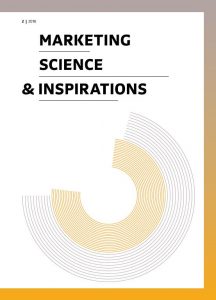
What opinions are floating around the internet? Analyzing customer sentiment
Sentiment analysis and opinion mining seems to be a hot topic these days. Together with the spontaneous and massive expansion of new media (esp. social networks) this issue is being perceived as one of the major trends for the nearest future. Google Trends (a tool showing how often a particular search-term has been entered across various regions of the world and in various languages) reports a fivefold increase of search queries since 2007. However opinion mining and sentiment analysis are not only a recent phenomenon related to the development of information technology. A long time before the World Wide Web was born, our attitudes or (consumer’s) decisions had been influenced by our relatives or friends around us. As we specialize and narrow our focus, the more frequently we need additional information about certain fields. Thus we have been looking for specialists or professionals with (life) experience who are able to share their opinion or advice. A car enthusiast whom we know could recommend a mechanic or a garage, a respectable person we appreciate could help us with the decision for whom to vote in the local election, or a colleague might provide a reference about a job applicant we would like to hire for our company.
Before the mass media has evolved, people were able to receive an input from just limited surrounding. This neighborhood was more likely limited to the geographical area where the individual lived and to the community they belonged to. As the TV and radio became widespread, the range of people who could influence public meaning greatly expanded. The distance is no longer a barrier and audiences can be approached in many ways. Persons speaking to the audience through the broadcast became strong opinion makers influencing and changing public attitudes and beliefs. Besides the crème de la crème of world politics (i.e. Barack Obama, Mario Monti, Mitt Romney or Hillary Clinton) and CEOs of the largest companies (i.e. Tim Cook from Apple, Sheryl Sandberg from Facebook or Virginia Rometty from IBM) the Time Magazine’s List of The World’s 100 Most Influential People from 2012 also includes sport players (Jeremy Lin, Novak Djokovic, or Lionel Messi) artists (Rihanna, Adele) or even famous Chefs (Jose Andres). Many of those ”celebrities” do influence masses in the areas far beyond their expertise.
The online environment made it further possible to find out what others are thinking or experiencing, no matter if those are our personal contacts or well know professionals. In 2008, Pew Internet & American Life Project Report discovered that more than 80 percent of US internet users have previously done dome online research about a product. Twenty percent do so commonly. More than 75 % of online-hooked customers confirm that reviews have a significant influence on their purchase and they are willing to pay more for a product with better customer reviews. In addition, one third of users has posted an online review or rating regarding a product or service and thus became an influencer themselves.
Therefore continuous and systematic new media monitoring became an integral part of company processes. The aim of such activities is to recognize whether and (if so) in which context the media speaks about the company, hence companies can adjust their strategies and react in advance according to public opinions or attitudes. George Washington, the first President of the US, at the end of 18th century, monitored newspapers to monitor attitudes of his fellow citizens and what they were saying about him. Many of his successors also analyzed their media picture and 19th century witnessed an explosion of new companies scanning the media and cutting out news, providing the reports to government institutions, companies or individuals.
First press cutting (called “clipping” in the US) services retrieved information from media manually. They employed human readers to scan newspapers and look for keywords of (multiple) clients. Even if such services served only to a limited geographic area (mostly just one country) and monitored the media in just one single language, the human readers typically missed one third of articles containing keywords (as a result of not reading thoroughly but only fast scanning the articles). In the 1950s companies started to monitor TV broadcasts. Again, contracted personnel watched all programs and monitored broadcasted contents for keywords. With the introduction of Betamax and VHS technology, the monitoring process enabled recording and post-processing. Moreover, first automated speech-to-text systems have been developed, although they were still only 70–80 % complete and accurate.
The introduction of World Wide Web in 1990s brought revolutionary changes on the media market. Almost all media are now digitalized and available online. New monitoring companies offer a computer-based processing where country borders or national languages do not matter anymore. CyberAlert – the world press clipping service – monitors 55 000+ online news sources in 250+ national languages 24 hours a day. New websites spontaneously emerge, change and disappear every day. A common user is not only a web content consumer, but also contributes as an author. We write product reviews, post comments in discussion forums or on social networks or even have our personal online blogs. Such fragmented and unofficial information is a significant source of word-of-mouth or “buzz” about companies and products. Many of today’s most influential blogs (i.e. The Huffington Post, Techcrunch, Engadget, Mashable) began just few years ago as one-man-show, quickly growing into internationally recognized and respected media.
Media monitoring has rapidly changed. Recognizing sentiment and finding out about people’s attitudes still remains a challenge. However, utilizing sentiment analysis, companies can gain advantage from the insight in (social) media, recognize company or product reputation or develop a new marketing strategy addressing the negative sentiment and positively impacting on consumer’s perception. Moreover, top influencers and opinion makers can be identified. Sentiment analysis may be also useful in other domains for predicting the result of (presidential) election or pointing a virtual finger at the next American Idol.
Old-fashioned press cutting services just monitored the media and did not supply any interpretation of the outputs provided. Even these days when the data are collected automatically, companies mostly interpret them manually. Such a random approach is then susceptible to subjective error and is dependent on the experience and skills of the persons performing the analysis. Nevertheless, computer-based processing and modeling allows for automated sentiment analysis. Automated systems are repeatedly able to determine the sentiment (whether positive or negative) with 70–80 % accuracy. If automated systems were absolutely correct about sentiment classification, humans would still disagree with the results about 20 % of the time which is in no contrast to the level of agreement between raters they reached in human-rated analyses.
Automated sentiment analysis became an integral part of market research activities in companies such as Kia Motors, Best Buy, Deutsche Bank, Southwest Airlines or Paramount Pictures. Although the analysis cannot provide a hundred percent certainty, it can definitely offer important insights. It could be used to gain understanding of customer experience, recognize competitive dangers or discover emerging market opportunities. Opinions floating around the cyberspace begin to represent vox populi to the degree, in which most market segments participate in online discussions. Automated sentiment analysis might be a good way how to deal with cluttered online environment and how to get insight into the mind of a new millennial consumer.
Model based segmentation of TV advertising scheduling patterns
The advertising campaign is set according its goals and objectives. To ensure the highest efficiency of the campaign, the companies use different approaches to scheduling and timing the advertisements. There are different scheduling patterns identified to adjust the campaign timing according to the communication goals. The volume of advertising during the campaign may be continuous with steady (i.e. reminder advertising for matured products or building brand awareness), rising (i.e. to concentrate attention around a particular event) or falling (i.e. fade after initial launch of a new product) trend during the campaign. There are more scheduling pattern identified (i.e. flighting or pulsing) used for short and heavy advertising periods. The campaign length also reflects the nature of the communicated message and the goals of the campaign. For example longer campaigns (weeks or years) are often directed towards building the longer term effects of favorable brand image and strong brand loyalty.
Getting Inside the Minds of the Customers: Automated Sentiment Analysis
Sentiment analysis and opinion mining is being perceived as one of the major trends of the nearest future. This issue follows up on the spontaneous and massive expansion of new media (esp. social networks). The amount of the usergenerated content published on social networks significantly increases every day and becomes an important source of information for potential customers. More than 75 % of the users confirm that customer’s reviews have a significant influence on their purchase and they are willing to pay more for a product with better customer reviews. Furthermore one third of the users has posted an online review or rating regarding a product or service and thus became an influencer himself. Using sentiment analysis, company can take advantage to get insight from (social) media, recognize company or product reputation or develop marketing strategy responding to the negative sentiment and positively impact consumer’s perception. Moreover, top influencers and opinion makers can be identified for further cooperation. Even though social media monitoring is commonly carried out automatically (by tracking selected channel or by crawling the web and searching for given keywords) the analysis and interpretation of retrieved data is still often performed manually. Such unsystematic approach is then prone to subjective error and is dependent on the experience and skills of the person performing the analysis. Thus there is a strong call for automated methods (based on computer-based processing and modeling) which would be able to classify expressed sentiment automatically. Good results can be obtained with supervised learning models (i.e. support vector machine models). However, for a good performance a good training set is needed. Such approaches also often work with lexical databases (i.e. WordNet) or sentiment vocabularies (identifying polarity keywords with the sentiment clearly distinguished i.e. “horrible”, “bad”, “worst”). These models do not work very well when the training set comes from different domain than the testing data and also not many studies have addressed sentiment analysis issue for morphologically rich languages, i.e. Arabic, Hebrew, Turkish or Czech. This experiment tries to develop and evaluate a sentiment analysis model for Czech language (which is morphologically rich) which is not dependent on any prior information (lexical databases or sentiment vocabularies which are not available for Czech language) and works well on different domains. As training set data from Czech-Slovak Film Database were used. The support vector machine based classification model has been then tested on different domain (data from an e-shop selling a wide range of products from electronics to clothing or drugstore goods). With a good results (accuracy around 80 %), the model has been also tested on other languages, including Amazon customer reviews in English (Amazon.com, Amazon.co.uk), German (Amazon.de), Italian (Amazon.it) and French (Amazon.fr). Even on other languages, the model still provided a good performance ranging from 70 to 80 %. This may not sound impressive but there are studies reporting that human raters typically agree about 80 % of the time. Thus if an automated systems were absolutely correct about sentiment classification, humans would still disagree with the results about 20 % of the time (since they disagree at this level about any answer).
Designing for Culturally Diverse Audiences: Can Automated Attention Analysis Substitute the Eye-Tracking in Website Development?
Developers use a variety of methods to evaluate user’s reactions to the website. Research in neuroscience and natural vision processing resulted in the development of automated methods which simulate human attention and are able to provide similar results to eye-tracking. However robust evidence is still missing.
This study contributes and expands on this debate. Eye-tracking studies on cultural differences confirmed that users from different cultures have different expectations and preferences. This study answers the question whether cultural differences in web design could be revealed also by automated attention analysis. Websites of the largest beer producers from different countries with different cultural background were analyzed through automated attention analysis tool to determine whether there is a difference in the number of potential areas of interest and their size. The study confirms that automated tools can depict cultural differences and thus provide fast and inexpensive results for initial assessment of website interfaces.
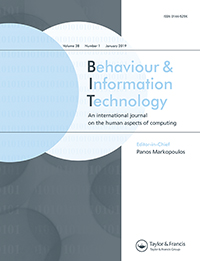
Cultural differences in online beer marketing: findings from automated attention analysis
The impact of culture on consumer behaviour has been an important research area for decades. The rise of e-commerce prompted the importance of culturally bound differences between websites. Web designers are compelled to adjust website development to the cultural characteristics of the target audience and to reflect local perspectives. The actual target users are often invited to provide valuable feedback on e-commerce applications. However, user tests are extremely costly and time consuming. Tools for automated web design assessment have only recently been introduced and have provoked debate regarding their ability to simulate human interaction. In this article, 40 leading beer-brand-related websites from four different groups (countries) are analysed. The aim of this study is to discover if automated tools predicting user eye activity are able to distinguish between websites from different cultures. The findings indicate that automated tools provide quick and inexpensive results for initial assessment of the website interface, clearly differentiating between websites from different cultural backgrounds, resonating with the current literature.
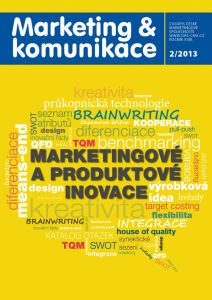
Automatizovaná analýza sentimentu: jak vytěžit více z online medií?
Social media is an environment which supports and encourages users to express attitudes and opinions. However such fragmented and disorganized source is difficult to monitor, analyze and interpret. Automated sentiment analysis might be the next step of the marketing research providing a valuable insight in the consumers mind.
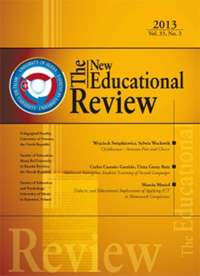
A Cross-Cultural Study of Online Marketing in International Higher Education – a Keyword Analysis
Higher education is a dynamic global industry with highly competitive and developed market. Universities communicate their international programs to attract prospective students interested in studying abroad. This study addresses a question, whether there is a difference between communicated characteristics of international programs among universities from various cultures. Websites of seventy universities coming from different cultural clusters are analysed through data-mining methods. The results suggests that marketing communications in international higher education do not stand on cultural grounds as there are only minor differences between international program communications across the world. The only difference in the group of prime international higher education providers was found between the Anglo-Saxon universities and the rest of the world.
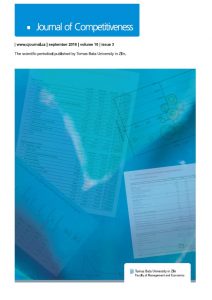
Tourism Destination Benchmarking: Evaluation and Selection of the Benchmarking Partners
Tourism development has an irreplaceable role in regional policy of almost all countries. This is due to its undeniable benefits for the local population with regards to the economic, social and environmental sphere. Tourist destinations compete for visitors at tourism market and subsequently get into a relatively sharp competitive struggle. The main goal of regional governments and destination management institutions is to succeed in this struggle by increasing the competitiveness of their destination. The quality of strategic planning and final strategies is a key factor of competitiveness. Even though the tourism sector is not the typical field where the benchmarking methods are widely used, such approaches could be successfully applied. The paper focuses on key phases of the benchmarking process which lies in the search for suitable referencing partners. The partners are consequently selected to meet general requirements to ensure the quality if strategies. Following from this, some specific characteristics are developed according to the SMART approach. The paper tests this procedure with an expert evaluation of eight selected regional tourism strategies of regions in the Czech Republic, Slovakia and Great Britain. In this way it validates the selected criteria in the frame of the international environment. Hence, it makes it possible to find strengths and weaknesses of selected strategies and at the same time facilitates the discovery of suitable benchmarking partners.

Measuring website quality: asymmetric effect of user satisfaction
Website quality measurement tools have been largely static and have struggled to determine relevant attributes of user satisfaction. This study compares and contrasts attributes of user satisfaction based on usability guidelines seeking to identify practical easy-to-administer measurement tools. The website users assessed business school homepages according to six criteria and fulfilled a randomly assigned yet typical task. After completing the task, respondents assessed the same six website quality/satisfaction criteria again. The consumer–product relationship seems similar to the link between a user and a website. User satisfaction, just like consumer satisfaction, is asymmetric and non-linear. Content and navigation have been identified as key ingredients when users judged website quality, alerting web designers and website practitioners to focus more closely on those attributes. Similar lessons can be drawn for marketing professionals, who typically supervise or determine the content, structure and other website facets.
Tourism Development Planning in Selected EU Countries
Tourism development planning is now part of the regional policies of all Member States of the European Union. Strategic plans at national or regional level are specific instruments of regional management, which contain results of the planning process and ensure the development of tourism in the selected region. The paper analyzes the representatives of these plans from Great Britain, Germany, the Czech Republic, Slovakia, Romania and Bulgaria. It evaluates their contents and form of processing according to suggested united methodology respecting main principles of current quality management. The paper tests the process of evaluation on a selected sample, compares different approaches to planning and identifies the best transferable practices as the first step of creating the complex system for evaluation and quality improvement of regional planning in tourism.
Language Independent System for Document Context Extraction
At this time all people, especially managers and businessmen, are exposed to the ever-present information pollution. This is why tools of business intelligence are of great importance; nevertheless the current methods can hardly cope with large and unstructured text sources like World Wide Web that currently becomes more and more important. To achieve this main goal we have to find and verify satisfactorily reliable methods for automatic extraction of a main context of a document, i.e., multidimensional structured characterization representing the main topic of the document. To cope with the multilingual sources we have to develop approaches that would not be dependent on the language of the source and that would not need any additional language dependent tools (like thesauri). In our conception, the context is dynamic – it means that a classification of a document will not be dependent only on the document in question but also on the corpus; the expansion of a corpus can result in a change of a document classification.
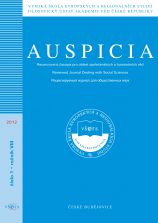
Hodnocení programů rozvoje cestovního ruchu: stanovení znaků kvality
The systematic tourism promotion can be understood as a specific instrument of regional policy of Czech regions. At the present time almost all regions are disposing with the particular programme document focused on tourism development in a given region. Nevertheless, these documents are considerably different in the case of their form and content, which complicates the process of their evaluation and comparison. In order to review the documents it is necessary to set objectively the generally valid requirements on the quality of elaboration and derive from them the measurable quality marks. This is the content of the first stage of the research. Its main aim is to draft the complex procedure for evaluation of the overall quality of the tourism development programmes.
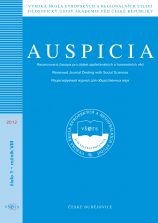
Hodnocení programů rozvoje cestovního ruchu: postup hodnocení a jeho aplikace
This paper summarizes the results of the second phase of the research. Its aim was to draft a procedure for evaluating the quality of tourism development programmes. The concrete requirements and quality marks were determined in the first phase of the research. So-called key characteristics were defined in order to assess the level of fulfilment of these requirements which should correspond with the quality marks. An interval method of assessment is used to evaluate the extent of matching the key characteristics in several quality levels. The evaluation process continues with the method entitled Distributively-delegative Awarding Points. Its result is the final value of the quality marks, characterizing the quality of the content and the format of the document. The chosen
procedure was applied to eight regional documents with the aim to determine the current state and the most common differences in the achievement of the quality marks.
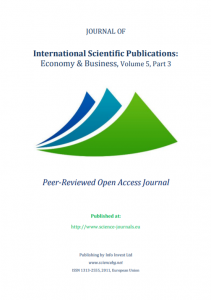
What Kind of Competences Are Sought By Employers at the Time of Crisis?
Competences are important prerequisites for any kind of job. Competences accumulate across a long period of time. Key competences for lifelong education have been suggested even by the European Parliament and EU Council in December 2006. This article provides analysis of a nation-wide survey of desired competences at the time of global economic uncertainty. As such it may assist educators in designing suitable courses and curricula that provide graduates with competitive edge on the labor market. Key words:
Key Concerns for Website Quality: Reflecting on User Views
The study compares and contrasts attributes of user perceived quality with information websites. It concerns a study of the formation of website quality, its nature and evolution based on the fulfillment of typical tasks. Based on empirical study based on 44 information websites, information value and navigation have been identified as key ingredients perceived by website users when judging website quality. Color scheme assessment was found to predict successful task fulfillment.

Zákaznická spokojenost a loajalita uživatelů automobilů – vybrané atributy
Snaha pochopit motivaci spotřebitelů k nákupu a jejich myšlenkové pochody je významnou oblastí zkoumání. Na základě empirického šetření mezi téměř 117,000 majiteli osobních vozů v pěti největších evropských automobilových trzích jsou v tomto příspěvku testovány vzájemné vazby mezi spokojeností s nákupem, spokojeností s užitím a zákaznickou loajalitou. Ukazuje se, že usilovat o nového zákazníka či extrémně pečovat o dealerskou síť nemusí být nejlepší kroky automobilových firem při realizaci jejich marketingových strategií.
Vytlačuje šrotovné budoucí prodeje?
Automobilový průmysl zaměstnává v rozvinutém světě mnoho pracovníků a tvoří významnou část průmyslové produkce. Skokový pokles poptávky po nových vozech způsobený zhoršenou dostupností financování i spotřebitelskými obavami z budoucnosti přiměl v závěru roku 2008 a v roce 2009 mnohé vlády k zavedení šrotovného – v podstatě dotačního programu podporujícího obnovu vozového parku v zájmu snížení emisí či zvýšení bezpečnosti provozu. Vyvstává otázka, zda tyto programy pouze nepřesouvají poptávku v čase a neurychlují nákup nového vozu, který by byl za jiných podmínek realizován později. Tento příspěvek se snaží nalézt odpověď na tuto otázku.
Manažerský audit v malých a středních podnicích
Manažerský audit je novým nástrojem hodnocení úrovně procesů a odhalování možností jejich zlepšování v malých a středních podnicích. Základem manažerského auditu je provedení analýzy situace v malých a středních podnicích pomocí řízených rozhovorů s využitím standardních způsobů dotazování doplněných o techniky koučování. Účelem manažerského auditu je pomoci manažerovi (majiteli) firmy nalézt řešení, které je vhodné pro rozvoj firmy a které odpovídá jeho možnostem a schopnostem
Augmented Product Reconsidered: Is Shopping Related to Product Satisfaction?
Substantial body of marketing and consumer behavior literature is devoted to the phenomenon of consumer satisfaction, its antecedents, attributes and consequences. This study, based on a survey among 160,000 car owners in five major European markets compares and contrasts product satisfaction in light of satisfaction with shopping experience. In other words, the paper addresses an important marketing question whether shopping event fosters positive product experience.
Based on quantitative analysis, the findings suggest there is no relationship between satisfaction with purchase and satisfaction with a product. The distinction between purchase and product satisfactions implies that a customer clearly differentiates between a product itself (car company) and purchase experience (dealers) not perceiving the car as a total product.
Important implications for marketing and product managers of car producers may suggest far lesser involvement in showroom and dealer development in search for satisfied customers. Similarly, the study would imply that marketing managers of dealerships can do little for improving product-related experience and should, therefore, focus on the purchase itself and surrounding services such as financing. Theory-wise, the concept of total product may need to be reconsidered.
